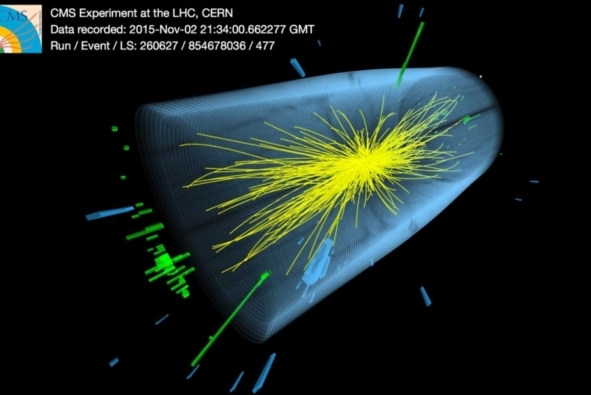Potential New Particle Shows Up at the LHC, Thrilling and Confounding Physicists

These particle tracks from the CMS experiment at the LHC show two photons arising from a roughly 750-GeV particle created in a proton-proton collision. The event may represent a new particle beyond the Standard Model of physics.
Credit: CERN
The gigantic accelerator in Europe has produced hints of an exotic particle that defies the known laws of physics
By Clara Moskowitz on December 16, 2015
A little wiggle on a graph, representing just a handful of particles, has set the world of physics abuzz. Scientists at the Large Hadron Collider (LHC) in Switzerland, the largest particle accelerator on Earth, reported yesterday that their machine might have produced a brand new particle not included in the established laws of particle physics known as the Standard Model. Their results, based on the data collected from April to November after the LHC began colliding protons at nearly twice the energy of its previous runs, are too inconclusive to be sure—many physicists warned that the wiggle could just as easily represent a statistical fluke. Nevertheless, the finding has already spawned at least 10 new papers in less than a day proposing a theoretical explanation for the particle, and has the halls and blackboards of physics departments around the world churning.
See full text